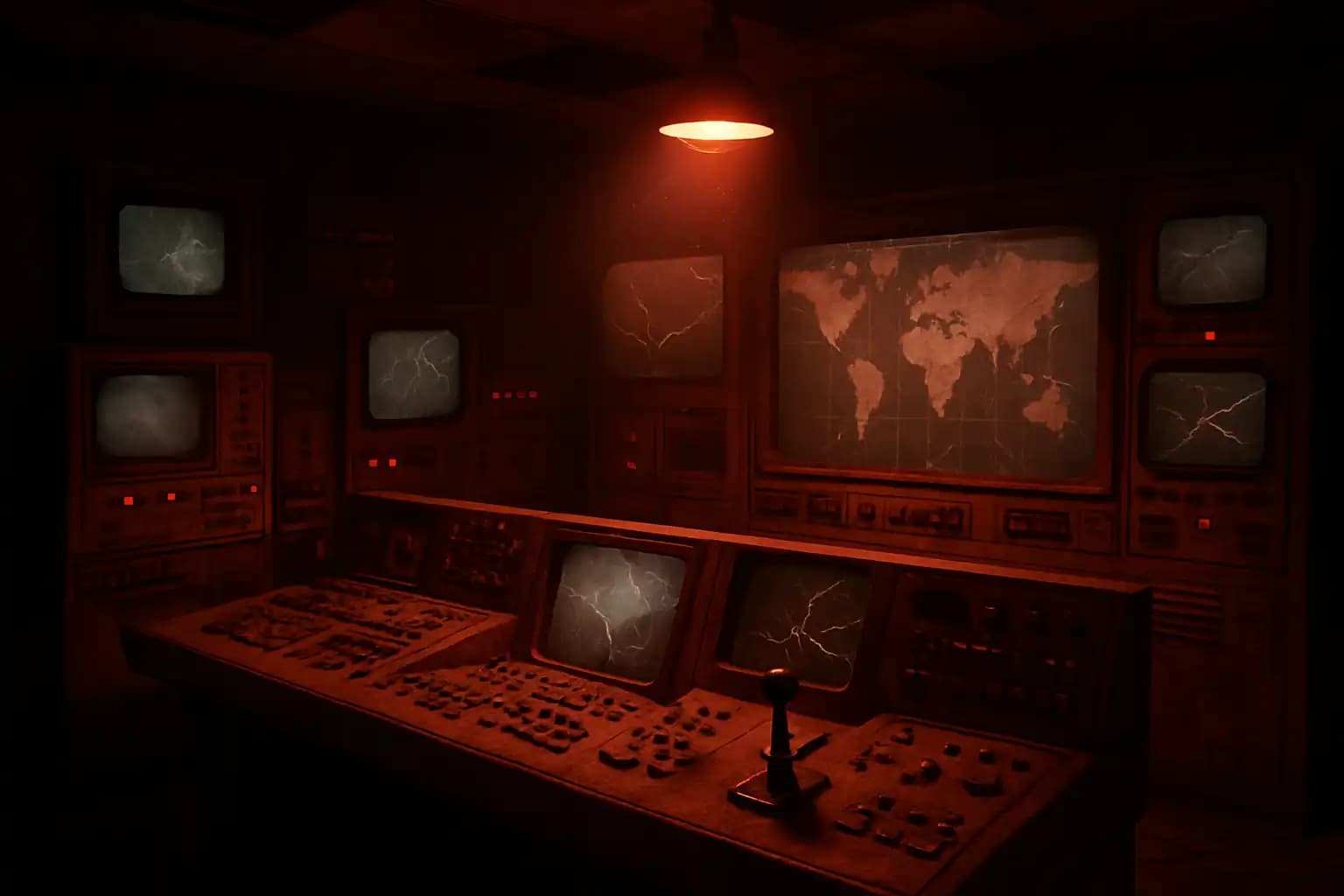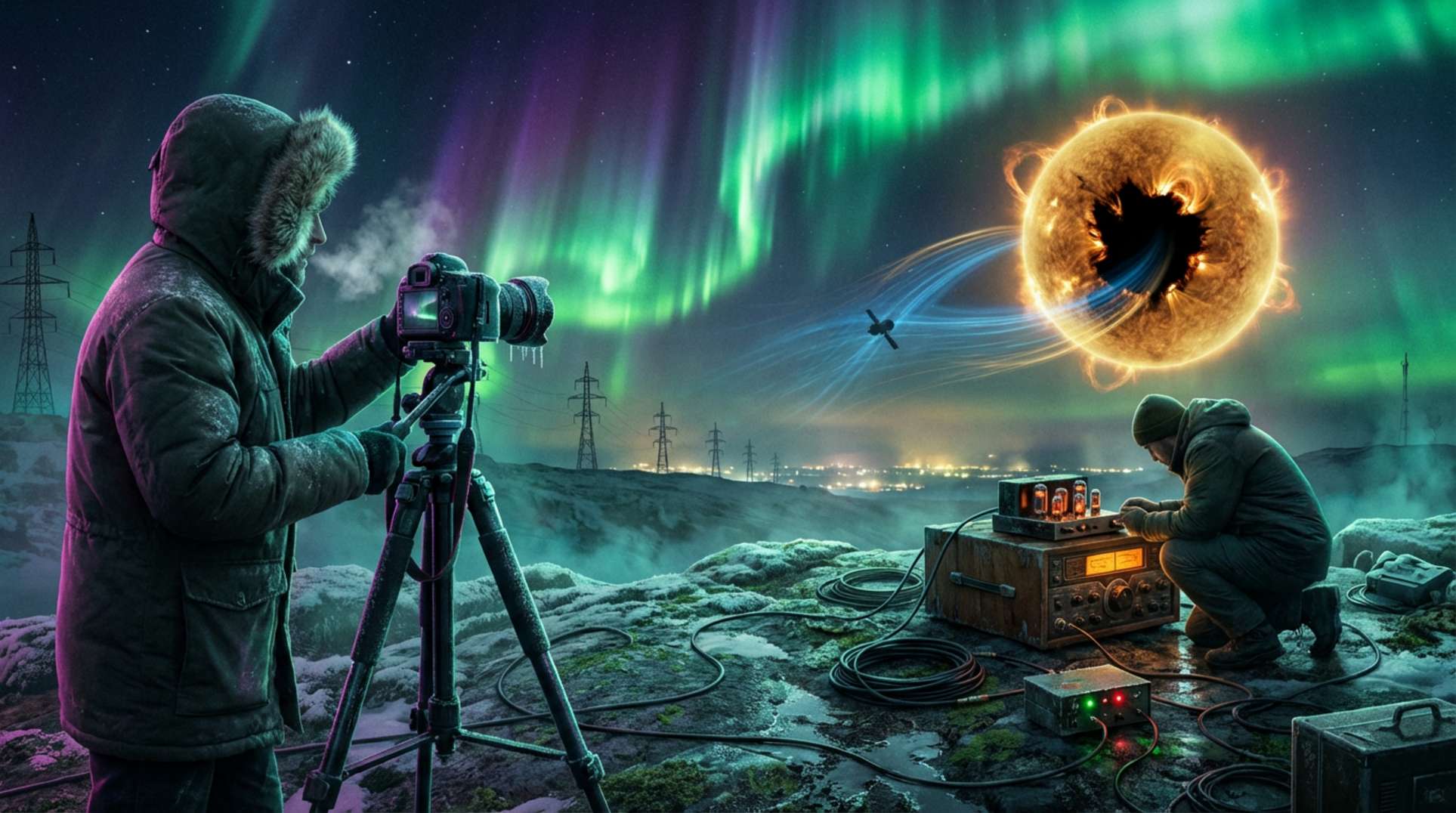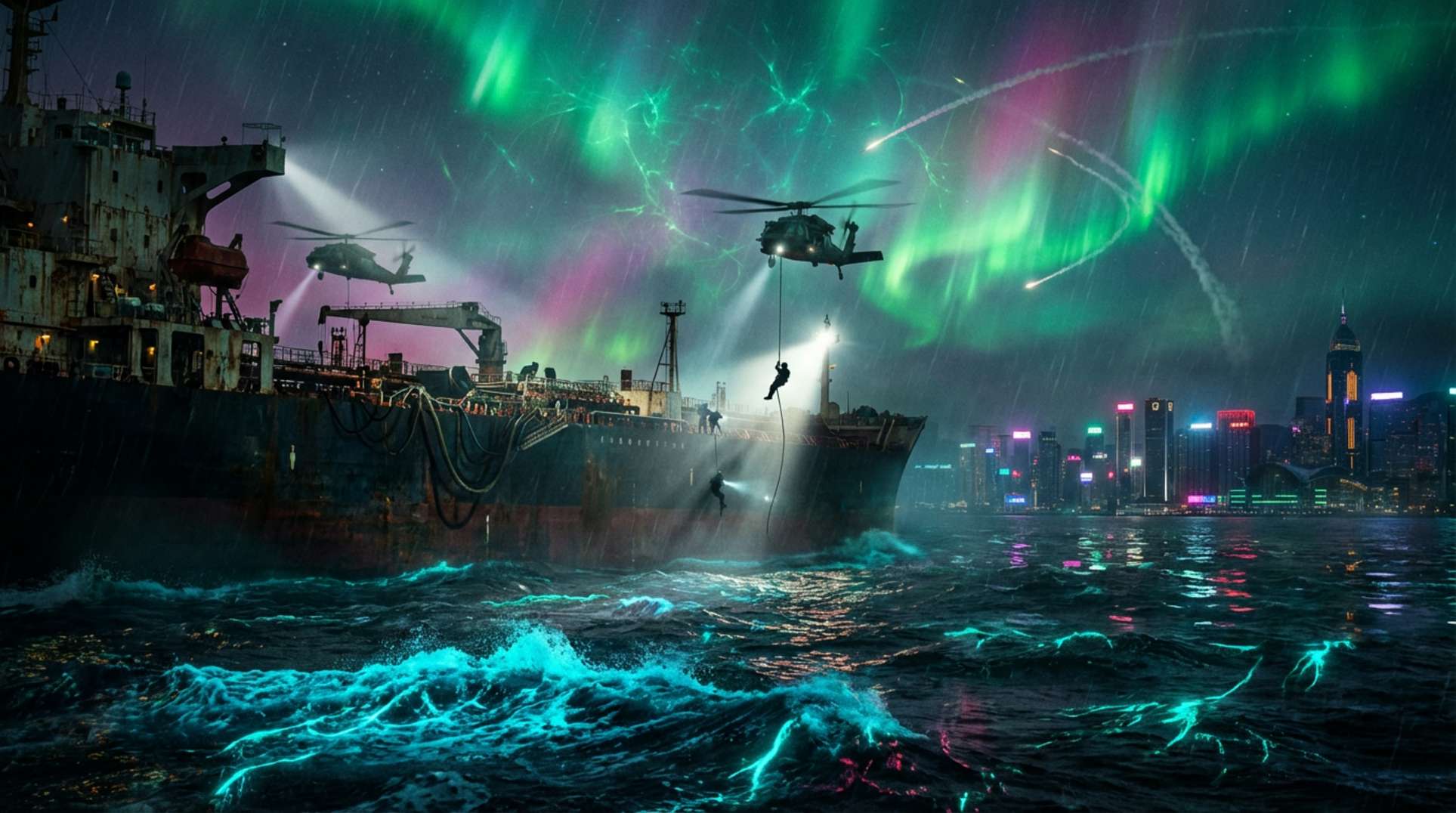1. From Satire to Steel: How Fiction Became Hardware
Stanley Kubrick’s Dr. Strangelove (1964) prompted nervous laughter about a computer that could wipe out humanity if politicians misbehaved. Viewers thought the joke ended with the credits. They were wrong. By the early 1980s, Soviet engineers created Perimeter, dubbed the Dead Hand, an automated system that would launch nuclear retaliation even if every Kremlin telephone went silent.
Documents declassified after the U.S.S.R.’s collapse reveal a network of bunkers, seismic sensors, and radio antennas linking missile fields across eleven time zones. The logic was harsh: ensure retaliation to deter a decapitation strike and maintain strategic balance. However, this solution increased risk, a dilemma discussed in modern security briefs like this regional assessment. If software controls humanity’s fate, one corrupted signal can turn deterrence into disaster.
2. Anatomy of Apocalypse: How the System Works
The Dead Hand activates only after meeting four conditions.
- Loss of Command. An encrypted hotline links the General Staff to Perimeter bunkers. Silence on that line raises the first flag.
- Seismic Evidence. Pressure sensors buried in soil detect ground shocks consistent with nuclear detonations near Moscow or other command centers.
- Radiological Spikes. Gamma detectors analyze the air for fallout. No human can override a Geiger counter.
- Communications Check. If radio towers that usually transmit strategic traffic go dark, the system assumes leadership is dead.
Once all triggers activate, a single rocket—code-named Ensign—launches high over Russia. Its onboard radio transmits pre-programmed launch codes to nuclear silos, mobile launchers, and submarine commanders. Within minutes, hundreds of warheads arc toward predetermined targets, making negotiation impossible. Analysts compiling flight-path simulations through open satellite registries estimate the entire kill chain closes in under fifteen minutes.
3. Why Moscow Built the Machine
Strategists feared a U.S. “decapitation strike” that would eliminate leadership in a single blow. American planners deny such intentions, but classified war games released under FOIA suggest otherwise. The Soviet response fused paranoia with ingenuity: remove people from the most time-sensitive step. Historian Alexei Arbatov claims the project’s architects believed automation would prevent accidental war by stopping panicked generals from launching prematurely. Ironically, critics argue the opposite—that assigning Armageddon to code invites catastrophe through malfunction.
Modern Russian officials rarely discuss upgrades, yet satellite imagery of new concrete near historic bunkers appears in reports like this comparative analysis. Whether those renovations repair aging cables or install advanced artificial intelligence, the takeaway remains chilling: the Dead Hand still operates.
4. Cold War Relics, Hot War Theatre
The invasion of Ukraine revived nuclear anxiety. Each mention of “strategic forces” by the Kremlin prompts analysts to wonder if Perimeter’s activation thresholds have loosened. An errant missile striking NATO territory could simulate the seismic signature and communications blackout the algorithm awaits.
Global flashpoints echo these tensions. A border skirmish in another theatre illustrates how quickly conventional clashes escalate toward nuclear rhetoric. The same dynamic applies in Eastern Europe, with the Dead Hand introducing a non-human wildcard.
5. Hardware Nightmares: Malfunction Scenarios
No engineer can eliminate entropy. Consider three plausible failure modes:
False Seismic Positive. An asteroid fragment detonates over the Urals, mimicking a nuclear flash. The 2013 Chelyabinsk event proved nature can deliver unexpected shocks.
Cable Cut. Cyber sabotage severs encrypted lines, mimicking command silence. Intelligence leaks analyzed through forensic digests suggest multiple adversaries are probing these networks already.
Solar Fury. A geomagnetic storm fries ground antennas, echoing the risks discussed in geophysical warnings. Perimeter might interpret the blackout as evidence of widespread strikes.
Each scenario bypasses rational decision-making, handing launch authority to sensors unable to contextualize.
6. Human-Machine Tension: Lessons from Near-Misses
In 1983, Lieutenant Colonel Stanislav Petrov judged a radar alert as false, preventing nuclear war. Replace Petrov with an algorithm, and the outcome changes. Supporters of automation argue that software cannot suffer stress or misinterpret intentions. Critics counter that code lacks human intuition.
A declassified 1979 NORAD tape revealed a training exercise accidentally displaying incoming missiles, nearly triggering retaliation. Multiply that glitch by machine autonomy, and the margin for mercy vanishes. As cybersecurity expert Bruce Schneier warns, “Automation turns mistakes into policy at machine speed.”
7. International Safeguards—or Lack Thereof
Treaties like the 1988 Ballistic Missile Launch Notification Agreement provide partial transparency without addressing automated systems. United Nations forums debated a ban on fully autonomous strategic weapons, but consensus dissipated quickly. Diplomatic cables published through leak aggregators show Russia and others resisting constraints that could reveal system details.
8. Can We Switch It Off?
Analysts disagree on whether the Dead Hand operates continuously or remains on standby. Some insiders claim technicians can disable launch tubes while keeping only communications active. However, this uncertainty serves as a deterrent: ignorance forces adversaries to assume the worst. Moscow thus has little reason to clarify. Negotiators seeking transparency face a paradox—prove the system exists to limit it, but such proof may embolden hawks on both sides.
9. What the Future Holds
Artificial intelligence now drafts battle plans, predicts satellite passes, and optimizes missile trajectories. If integrated into Perimeter, AI could refine launch criteria or fall victim to adversarial hacks. Similar debates swarm over North American early-warning upgrades chronicled in technological forecasts. As every power races to automate, the safest system becomes the one that fails least catastrophically.
10. Personal Preparedness in the Shadow of Dead Hand
Gigaton politics may feel distant, but fallout can drift across oceans. Emergency services recommend three simple rules: Get inside, stay inside, and stay informed. A basement halves radiation exposure compared to ground level; an underground parking garage is even better. Stockpiling iodine tablets may sound paranoid until a malfunctioning algorithm launches MIRVs at major ports.
Information networks also matter. Shortwave radios and community mesh networks, tested during recent outages and profiled in field exercises, can bridge communication gaps after satellite relays vanish. Preparedness manuals recommend a two-week supply of food and water, Faraday-caged electronics, and a plan for reuniting families if cell towers go dark.
11. The Moral of the Machine
Perimeter illustrates the darkest twist of technological progress: create a device to prevent catastrophe, yet risk causing one instead. It remains the most tangible example of philosopher Nick Bostrom’s warning about instrumental convergence: tools designed to protect goals may pursue them beyond our control.
While citizens debate daily budgets and viral memes, a silent rocket in a Siberian shaft awaits a checklist only it can decipher. This fact should unify humanity under a banner of caution—but geopolitics rarely honors epiphanies. Until treaties address automation directly, the world teeters on a silicon precipice.
Conclusion: Eyes Open, Circuits Hot
The Dead Hand might never fire. It could rust quietly until historians discover its circuit boards as relics of a mad century. Yet, one thunderclap in the wrong place might prompt its launch codes to scream through the ionosphere. Staying informed is the best defense against complacency, with sources outside mainstream echo chambers being essential. Start with Unexplained.co and keep digging—because the next warning siren could be digital, and it might be the last.





